The Significance of 450 Years’ Heritage
2017. szeptember 25., hétfőThe Common Synod of the Hungarian Reformed Church was held this summer in Debrecen, and the RCH sat down to talk with church scholars about its significance. Pastors and historians were asked to talk about the importance of this year being the 450th anniversary of the foundation of the Hungarian Reformed Church in the Carpathian Basin.
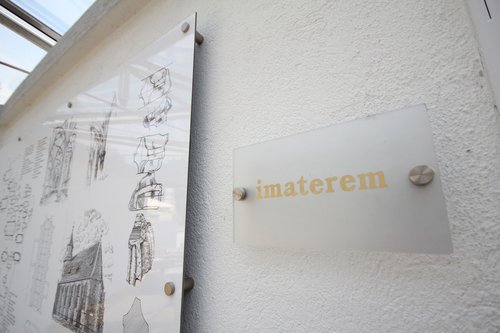
The Synod of the Hungarian Reformed Church was held June 24th in Debrecen, where church members celebrated the past 450 years of the Reformed Community in the Carpathian Basin and the new Hungarian translation of the Second Helvetic Confession that was approved. In preparing for the Synod, the church listed and thought about what the Reformed Constitutional Synod of 1567 in Debrecen means for us and revealed the forever-lasting teachings of our confession.
The garden of the Reformed Great Church of Debrecen and its bookstore and café, called Karakter [In English Character]1517, demonstrates the inseparability and harmony of the present and past, and commemorates the Synod held 450 years ago. “St Andrew’s Church stood in this place centuries ago, where there used to be a prayer room– it remained unharmed even after a fire burnt down the church. This was the place where the Synod of 1567 approved the Second Helvetic Confession with the Synod chaired by Péter Méliusz Juhász,” said István Oláh, pastor of the congregation of the Reformed Great Church of Debrecen. He mentioned that one of the main purposes of the congregation’s work is to make visitors aware of the history of the place - and the Hungarian Reformation as well. “It is important to know that the history of our church began here - where we have a space for quiescence, prayer and meditation even today,” he added.

Several-hundred-year old buildings are not typical in Debrecen, which further enforces the significance of the renovated prayer room - because the city has undergone numerous natural disasters and fires during which many of the buildings were seriously damaged. That is why the church was destroyed more times. After a fire in 1564, the ruined church could only be renovated between 1626 and 1628, with the support of Transylvanian Prince Gábor Bethlen. The rebuilt church was burned down again in the fire of 1802. Today’s Great Church was constructed between 1805 and 1824 in classicistic style, designed by Mihály Péchy.
Defending the Belief in the Holy Trinity
To understand the significance of the Reformed Constitutional Synod of 1567, we should know the historical background of that era, which we were informed about by church historian Béla Levente Baráth. After the battle of Mohács in 1526, Turks started to occupy Hungarian border forts. By 1560, this expansion endangered the Hungarian Plain region as well. Because of war and the constantly changing borders, huge territories had to face depopulation, meanwhile Debrecen was at the intersection of the Principality of Transylvania, the territory of Turkish occupation, and the Hungarian Monarchy. Parallel to these events, wings of Reformation step-by-step started to radicalize and grow in some parts of Transylvania and Partium [A historical and geographical region in the Kingdom of Hungary]. People living in deteriorating conditions questioned old rules and traditions: not surprisingly - with the actions of Ferenc Dávid - antitrinitarianism started to spread. “In this situation the question was raised: If life is so insecure, how could I live out my relationship with God?” asks Baráth. “We should find the foundations which we must defend under any circumstances. For Péter Méliusz Juhász, Gáspár Károlyi, and all participants of the Synod, trinitarianism was considered a foundation 450 years ago - which they also defended.”
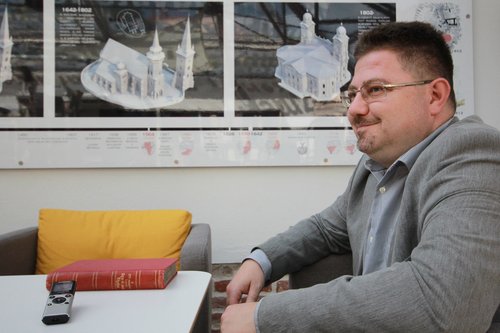
Ferenc Dávid emphasized that Jesus was simply a human being, and that is why he’s not worthy of praise. According to this, God is, in nature and in person, one. As an answer to his antitrinitarian teachings, disputes were formed where Méliusz and his supporters fiercely defended trinitarianism. At a critical point in the series of conflicts, the formation of the Synod was based on clarifying the positions and arguments of supporters of the Helvetic Confession - which happened 24-26th February, 1567.
Representatives of 17 Presbyteries participated at the Synod, coming from numerous parts of the country. “It is interesting that both Péter Méliusz Juhász and Gáspár Károlyi studied in Wittenberg and worked together later on during the Reformation, as the establishing of the Synod of Debrecen proves,” points out Baráth.
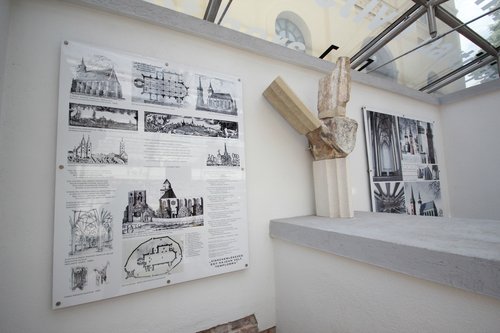
Participants of the Synod adopted a Confession in Hungarian and Latin which defied antitrinitarian teachings. They also approved the Second Helvetic Confession and decided on regulations concerning church law and liturgy. These regulations took general effect - by inviting a wide range of members from different churches - and provided the basis for the Hungarian Reformed Church.
The Second Helvetic Confession was written by Heinrich Bullinger – a descendent of Ulrich Zwingli - who connected Zwingli and John Calvin’s activity. The Confession refers to Christian doctrine as a whole and is made up of 30 chapters. It was started as Bullinger’s personal confession and was later adopted by Elector Palatine, Frederick III and his community in 1566.
The significance of the Reformed Constitutional Synod of 1567
In connection with the Council’s decisions, Baráth emphasizes that although a unified Hungarian Reformed confession was formed by 1567, the full-scale structural regulation of the church was only fulfilled at the Constitutional Synod of 1881, due to the three-part division of the country and counter-reformation. Its draft bill was drafted for 3 years and the Synod itself took a month. The Reformed Constitutional Synod of 1567 took only 3 days, thus there was not enough time for legislation - the regulations served as guidelines that were further developed in following councils.

Thanks to then Transtibiscan bishop Áron Hegymegi Kis, the documents of the Synod of 1567 are available even in Hungarian, and he also helped with collecting the sixteenth-century synods’ regulations for the 1881 Constitutional Synod.
Synods were held in 1566 in Gönc, 1570 in Nyírbátor, and 1577 in Csenger, but the Synod of Debrecen in 1567 is outstanding because of its various and wide-ranged regulations. One of its most important results was the adoption of the Second Helvetic Confession, by which Hungarian reformers were not anymore identified as protesting against something, but instead they were categorized as joining an international process.
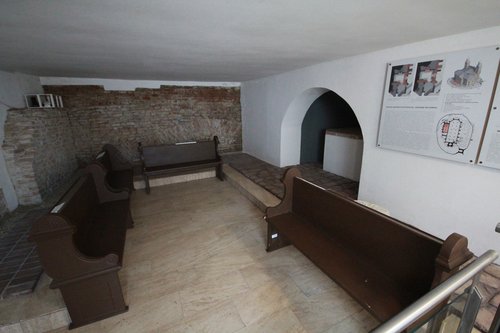
Another difference in the Synod of 1567 from the others is that its accepted guidelines were influential throughout centuries in the life of the Hungarian Reformed Church. After the Peace Treaty of Vienna in 1606, Hungarian Protestants were called Evangelicals following the Helvetic Confession.
Fundamental document of our Reformed identity
“The document highlights all the Reformed characteristics that are relevant even today and we have to follow them. It complements the 1563 Heidelberg Catechism, which makes the two documents fundamental,” says Károly Fekete, Bishop of the Transtibiscan District, about the Second Helvetic Confession. “Our ancestors followed the Swiss Helvetic form of Reformation from the 1550’s, but adopting the Confession was an essential aspect of the development process.”
Bullinger’s Confession came up in 1566 and reached Hungarian Protestants in a year. It arrived in the country through several channels, like through the activity of merchants and with the help of students (three Hungarian students studied in Switzerland in 1566), but it also reached the country through close Hungarian-Polish relations. “It is sure that participants of the Synod of 1567 were aware of the significance of the document and signed the Confession with strong determination,” added Károly Fekete.
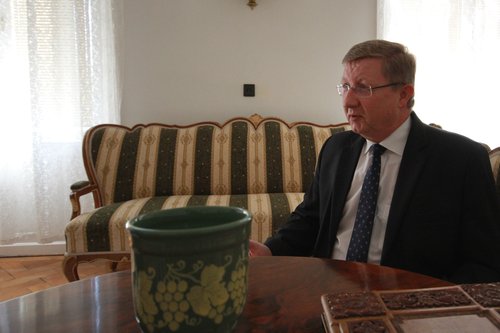
“The Second Helvetic Confession is a simple explanation about true faith and about the general tenets of Christianity,” said the Bishop. It shares practical knowledge about general tenets of Christian faith and about specific Reformed characteristics. It gives answers to questions about the Trinity and points out that the Scripture gives evidence of the Holy Trinity. The Confession shows the unity of Scripture and warns us to remember that both the Old and the New Testament form the basis of our faith together, which “cannot be taken away from us for centuries.”
“By presenting the dual meaning of Jesus’ personality and by emphasizing his mediation role we recognize the significance of our only Messiah, by whom the Trinity is interpreted. The Second Helvetic Confession clarifies interpretations of predestination. The justification of human life is reached through Jesus’s death and resurrection,” says Fekete.
Confession as a guideline
The Second Helvetic Confession is about the Church, traditions, and universal priesthood. It dissolves hierarchical structure by entitling Christ as the head of the church. “This thought is strengthened by Bullinger with the principle of universal priesthood, which still has an outstanding role in our church,” points out Fekete. Besides these, it gives practical guidelines in terms of congregational activity. Such guidelines are the sections about congregational occasions, singing, holidays, fasting, liturgy, church privileges, marriage, and everyday life - which set followers free from the bonds of church obligations of the Middle Ages.

The Second Helvetic Confession has a remarkable aspect even in its introduction: it emphasizes that for those who show a good example and teach others according to the Scripture, others will follow them and show their gratitude. This principle makes our relation to dogmas relative: dogmas cannot tie us if they contradict God’s words. This gave new directions to the rigid views of the Middle Ages.
Károly Fekete also mentioned that Bullinger shares four ecumenical confessions, which were written in the first four centuries of Christianity besides the Apostles’ Creed: fourth century Nicean and Niceno-Constantinopolitan Creed, the Ephesian Creed of 431, and the Chalcedonian Creed of 451. “These tie us with our Orthodox and Catholic brothers because these are our common values with which we can agree,” adds Fekete. Bullinger’s Confession, which was accepted in 1567, proves that Reformation is not a new “discovery,” but a return to the basis of Christianity.
Finding our way back to the relevance of the Confession
The followers of Reformation’s Helvetic wing built up their system according to strict norms, in which the Second Helvetic Confession played an important role. The interpretation of the Scripture and the Confession requires serious preparedness from the pastor, who does not collect information only from professional and scientific works and literature, but from the Bible in its original languages - Hebrew and Greek.

A specific characteristic of the Reformation is “ad fonts,” or the principle of going back to the origins. According to this, translators returned to the original text of the Bible - older than the Latin language Vulgate.
“I think the Second Helvetic Confession is so rich that it cannot be erased from our lives - we use its terminology even if we are not aware that we learnt the words from it,” says Fekete. According to him, the Confession was continuously passed down from generations to generations in the past centuries and, if its new translation is accepted in Debrecen, everyone will be able to read it without any problem. It gives a new opportunity to study if we do not have to struggle with archaic language.

Károly Fekete summed up what the Second Helvetic Confession means for today’s Protestants. “It is a theological pillar to which we can always return to in order to revive old thoughts. We need to learn again what Reformation’s heritage is.” The thirty chapters of the Second Helvetic Confession give a good guideline to our everyday life and this is not dependent on the era we live in. “I wish we read it as many times as possible in order to get closer to the Scripture, and thus to the Trinity.”
Live with the heritage
After getting acquainted with historical events and the significance of the Second Helvetic Confession, we are interested in what the heritage of 450 years means to the congregation of the Great Church of Debrecen. According to pastor István Oláh, it determines our everyday lives, which is why he was especially grateful to the local authority for giving the building to our church’s community, which includes the prayer room which served as venue for the Synod of 1567.
.jpg.500x500_q85.jpg)
“It was an old demand of our congregation to welcome Great Church’s visitors in a building which belongs to us. Our goal was to establish a forum where people can meet and get to know one other,” adds István Oláh. Previously the church had a place for a lapidarium [a place where stone (Latin: lapis) monuments and fragments of archaeological interest are exhibited] and a teahouse, where the remains of St Andrew Church were exhibited. We wanted to present the relics and history of the Reformation in a more cozy environment where anyone can come in and get to know the history of Hungarian Reformed people. “This place can serve as a meeting point - that is why we organize theological and literary events and concerts. The café is suitable for about 60 people and it is mostly full during our events, which is always satisfying,” the pastor says, explains that the past and present meet with the help of the Café, Karakter 1517.
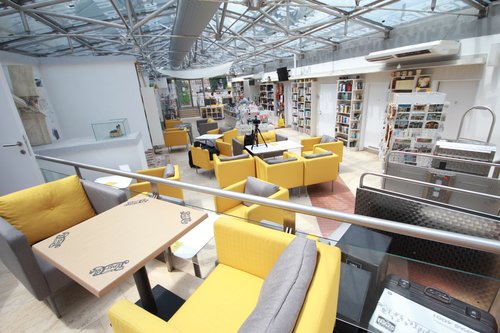
Members of the congregation are often asked how they are following their ancestors’ examples. “We are trying to deepen relations with the past in the lives of the members, but it should be a cardinal question for everyone, not only for the congregation. Reviving our ancestor’s heritage is our responsibility, and it is an expression of our faith, too,” explains Oláh. “Our forefathers built churches and schools for us which we inherited - and because of this, we have to become visible as well. All Christians should find a way to do this.”
“Our congregation represents Christ’s message with our means. The most effective way of doing this is showing the love we get from Jesus to the world. If the message of Jesus Christ is represented in the everyday lives of Christians, then our service is not in vain.”
Written by Zsuzsanna Farkas
Translated by Gréta Pataki
Edited by Kearstin Bailey
Photos by Zsolt Szabó, János Barcza, Richárd Kalocsai
Contact us
Click here if you are interested in twinning.
Reformed Church in Hungary
Address: H-1146 Budapest, Abonyi utca 21.
PO Box: 1140 Budapest 70, Pf. 5
Email: oikumene@reformatus.hu
English, German and Korean language services in Budapest
Links
Recommended articles
-
Pastoral Letter in the Light of the Pandemic
Bishop Dr. István Szabó sent a pastoral letter of encouragement to the ministers serving in RCH’s congregations, expressing his gratitude for the persistence and creativity of the pastors.
-
RCH Joins in Pope's Call for Prayer
RCH published the call on congregations to join the initiative of Pope Francis, supported by ecumenical organisations, to unite in praying the Lord’s Prayer on Wednesday, 25 March, at noon.
-
English Speaking Worship Services Online
Each Sunday at 11 AM (CET) the St. Columba's Church of Scotland in Budapest, the international community of RCH invites you to join the worpship service on its facebook page.
-
Test of Humanity and Companionship
Reformatus.hu asked Dr. György Velkey, Director General of the Bethesda Children’s Hospital of RCH about the challenges of health care workers and ways of prevention against the pandemic.
-
All Church Events Suspended
In light of the coronavirus the Presidium of RCH requested congregations to suspend all church events with immediate effect. Beside restrictions, it calls for prayer, sobriety and responsibility.











